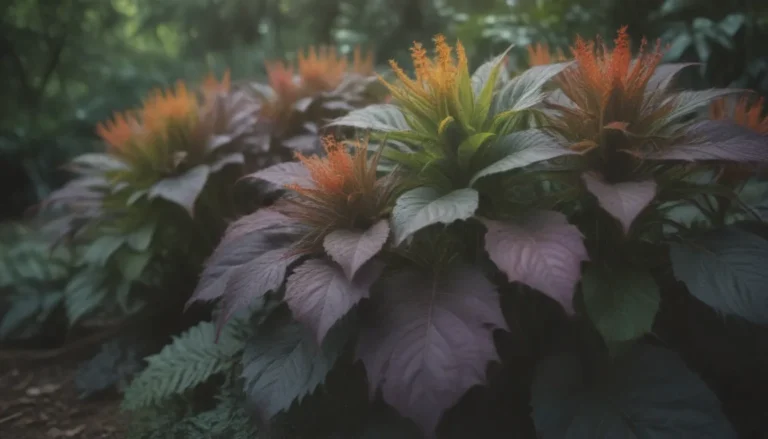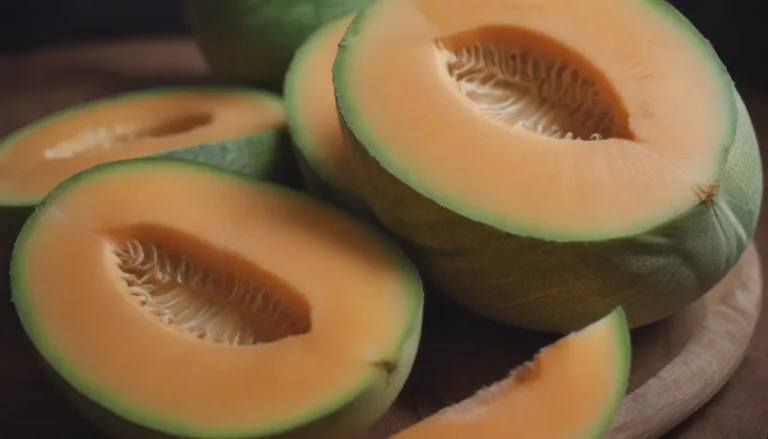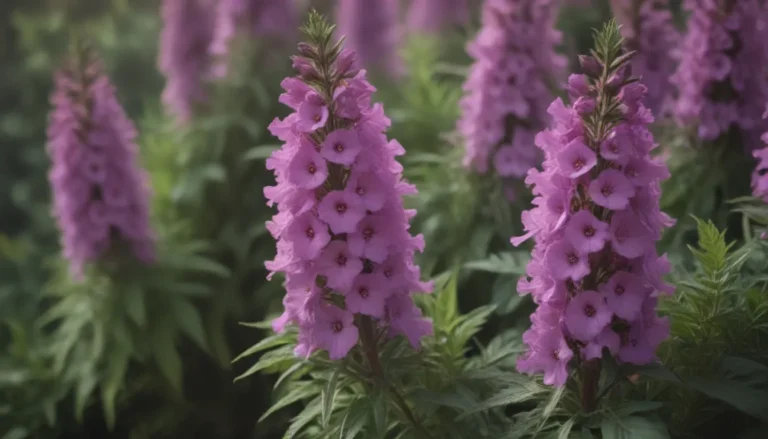How to Grow and Care for Rockspray Cotoneaster: A Comprehensive Guide

Are you looking to add a touch of beauty and interest to your garden all year round? Look no further than the rockspray cotoneaster, also known as wall cotoneaster. This horizontally spreading shrub is a fantastic addition to any landscape, offering a variety of colors and textures throughout the seasons. From light-pink flowers in the spring to glossy green leaves in the summer, and attractive reddish-orange to burgundy foliage and berries in the autumn, the rockspray cotoneaster is a showstopper.
In this comprehensive guide, we will delve into all aspects of growing and caring for rockspray cotoneaster. Whether you’re a seasoned gardener looking to expand your knowledge or a beginner eager to learn, this article will provide you with valuable information to help you successfully cultivate this beautiful shrub in your garden.
Rockspray Cotoneaster Care: Tips and Tricks for Success
Let’s start by discussing the key care requirements for growing a healthy and thriving rockspray cotoneaster shrub.
Warning: Invasive Species Alert!
Before we dive into the care requirements, it’s essential to note that Cotoneaster horizontalis, a species of cotoneaster, is considered invasive in certain regions of the United States, including Minnesota, Washington, Oregon, and California. Be sure to check the status of cotoneaster species in your area before planting to prevent potential ecological issues.
Light:
Provide your rockspray cotoneaster with full sun to optimize berry production and enhance the vivid fall foliage colors. This shrub thrives in sunny locations, so ensure it receives ample sunlight throughout the day.
Soil:
While rockspray cotoneaster is not overly particular about soil pH, it generally performs best in soil with a neutral pH. The most crucial soil requirement for this plant is good drainage. Opt for loamy soil that drains well to prevent waterlogging, which can harm the plant’s roots.
Water:
Once established, rockspray cotoneaster is relatively drought-tolerant. However, during the initial establishment period, water the shrub regularly to keep the soil consistently moist. Monitor the soil moisture levels and adjust your watering schedule accordingly.
Temperature and Humidity:
Rockspray cotoneaster thrives in moderate temperatures and does not fare well in hot climates. Avoid planting this shrub in regions with high temperatures, as it may struggle to thrive. Additionally, rockspray cotoneaster prefers low humidity environments, making it an excellent choice for areas with dry conditions.
Fertilizer:
This shrub is not a heavy feeder, and typically, minimal fertilization is required. Add compost to the soil as needed to provide essential nutrients for healthy growth. Avoid over-fertilizing, as this can lead to excessive foliage at the expense of flowers and berries.
Types of Rockspray Cotoneaster: Exploring Varieties and Cultivars
The cotoneaster genus comprises a diverse range of plant species, each with its unique characteristics. Within the rock cotoneaster category, two varieties stand out:
- Cotoneaster horizontalis var. perpusillus: A naturally occurring variety that grows only one foot tall, making it an ideal ground cover plant.
- Cotoneaster ‘Variegatus’: A cultivar with two-toned leaves, adding visual interest to the landscape.
In addition to Cotoneaster horizontalis, other species of cotoneaster to consider include Cotoneaster dammeri, Cotoneaster divaricatus, Cotoneaster lucidus, and Cotoneaster salicifolius. Each species offers unique features and growth habits, allowing you to select the ideal variety for your garden.
Pruning Tips for Rockspray Cotoneaster: Maintaining Shape and Health
While pruning is not necessary for the overall health of rockspray cotoneaster, occasional trimming can help contain its spread and maintain a pleasing shape. When pruning, avoid cutting off the stem tips, as this can disrupt the plant’s graceful form. Instead, focus on removing any branches that detract from the shrub’s overall appearance. If the shrub’s rapid spreading is a concern, regular pruning can help restrict its growth and prevent it from becoming invasive.
Rockspray cotoneaster has a unique ability to root wherever its branches touch the ground, enabling it to spread quickly. If you prefer a more controlled growth habit, diligent pruning is essential to limit the shrub’s expansion. For those seeking low-maintenance landscaping options, consider alternative plants that are less aggressive in their growth habits.
Propagating Rockspray Cotoneaster: Easy Methods for Plant Propagation
One of the simplest ways to propagate rockspray cotoneaster is through stem cuttings. Follow these straightforward steps to propagate new plants from existing ones:
- Select a healthy, mature stem from the parent plant.
- Using a sharp, sterilized knife, cut a six-inch section of the stem just below a leaf node.
- Remove the lower leaves from the cutting, leaving only a few at the top.
- Dip the cut end of the stem into rooting hormone to promote root development.
- Plant the cutting in a well-draining soil mix and keep it consistently moist until roots develop.
By following these steps, you can easily propagate new rockspray cotoneaster plants to expand your garden or share with fellow gardening enthusiasts.
Growing Rockspray Cotoneaster From Seed: A Step-by-Step Guide
While propagating rockspray cotoneaster from stem cuttings is the preferred method for fast and reliable results, growing this shrub from seeds is also an option for patient gardeners. Follow these steps to grow rockspray cotoneaster from seed:
- Collect ripe berries from a mature rockspray cotoneaster plant.
- Extract the seeds from the berries and rinse them thoroughly to remove any pulp.
- Stratify the seeds by placing them in a container with damp peat moss in the refrigerator for several weeks.
- Plant the stratified seeds in a seed-starting tray filled with a well-draining growing medium.
- Keep the soil consistently moist and provide adequate sunlight for seed germination.
While growing rockspray cotoneaster from seed may take longer than using stem cuttings, it can be a rewarding experience for gardeners looking to start plants from scratch.
Overwintering Rockspray Cotoneaster: Preparing for Cold Weather
As winter approaches, it’s essential to prepare your rockspray cotoneaster for the colder months. While these shrubs are relatively hardy, a few simple steps can help them survive the winter with minimal stress:
- Mulch around the base of the plant to insulate the roots and protect them from freezing temperatures.
- Avoid excessive pruning in late fall, as this can leave the shrub vulnerable to cold damage.
- Monitor soil moisture levels during the winter months and water sparingly to prevent root rot.
By taking these precautions, you can ensure that your rockspray cotoneaster remains healthy and vibrant throughout the winter season.
Common Pests and Plant Diseases: Identifying and Treating Issues
Rockspray cotoneasters are generally resistant to serious pest and disease problems, but they can still encounter issues that affect their health. Some common pests and diseases to watch out for include:
- Spider Mites: These tiny pests can infest the shrub during hot, dry weather. Regularly spraying the plant with a strong stream of water can help control spider mites.
- Cotoneaster Webworm: This insect pest can skeletonize the leaves of the shrub, leading to unsightly damage. Chemical pesticides may be necessary to eradicate this pest.
- Fire Blight, Leaf Spots, and Cankers: These diseases can affect the overall health of the shrub. Prune affected branches and treat with fungicides if necessary to prevent the spread of disease.
By promptly identifying and addressing pest and disease issues, you can maintain the health and vitality of your rockspray cotoneaster shrub.
How to Get Rockspray Cotoneaster to Bloom: Tips for Encouraging Flowering
From April to May, rockspray cotoneaster produces clusters of small, pink flowers that attract bees and birds to the garden. To promote abundant flowering and fruiting, follow these tips:
- Plant the shrub in a sunny location to maximize flower production and ensure optimal growth.
- Provide adequate water and nutrients to support the plant’s flowering cycle.
- Avoid excessive pruning that may remove flower buds or disrupt the shrub’s natural growth pattern.
By creating the ideal growing conditions for your rockspray cotoneaster, you can enjoy a profusion of beautiful flowers and berries throughout the growing season.
Common Problems With Rockspray Cotoneaster: Troubleshooting and Solutions
While rockspray cotoneaster is a relatively low-maintenance plant, it can still encounter a few issues that require attention. Here are some common problems to watch out for:
- Browning Foliage and Branches: Symptoms of fire blight, a bacterial disease that can affect the shrub. Prune infected branches and disinfect pruning tools to prevent the spread of the disease.
- Yellowing Foliage: Indicates a spider mite infestation. Treat with insecticidal soap to control the pests.
- Branch Dieback: Caused by pests such as scale or fungal infections. Prune affected branches and monitor the shrub for signs of stress.
- Blistering: Yellowish or reddish-brown blistering may be caused by blister mites. Use horticultural oil to treat affected leaves.
By addressing these common problems promptly and implementing appropriate solutions, you can keep your rockspray cotoneaster healthy and thriving in your garden.
Conclusion
In conclusion, rockspray cotoneaster is a versatile and attractive shrub that can enhance the beauty of any garden or landscape. By following the care tips and recommendations outlined in this comprehensive guide, you can successfully grow and maintain a flourishing rockspray cotoneaster shrub in your outdoor space. Whether you’re a beginner gardener or an experienced plant enthusiast, the information provided in this article will help you cultivate a healthy and vibrant rockspray cotoneaster that will delight you with its beauty throughout the year.
Remember to plant your rockspray cotoneaster in a sunny location with well-draining soil, provide adequate water and nutrients, monitor for pests and diseases, and prune as needed to maintain its shape and health. With proper care and attention, your rockspray cotoneaster will reward you with beautiful flowers, foliage, and berries, creating a stunning focal point in your garden.
So go ahead and plant a rockspray cotoneaster in your garden today, and enjoy the year-round beauty and interest this wonderful shrub has to offer!
Keywords: Rockspray Cotoneaster, growing, care, pruning, propagation, pests, diseases, flowering, maintenance.





